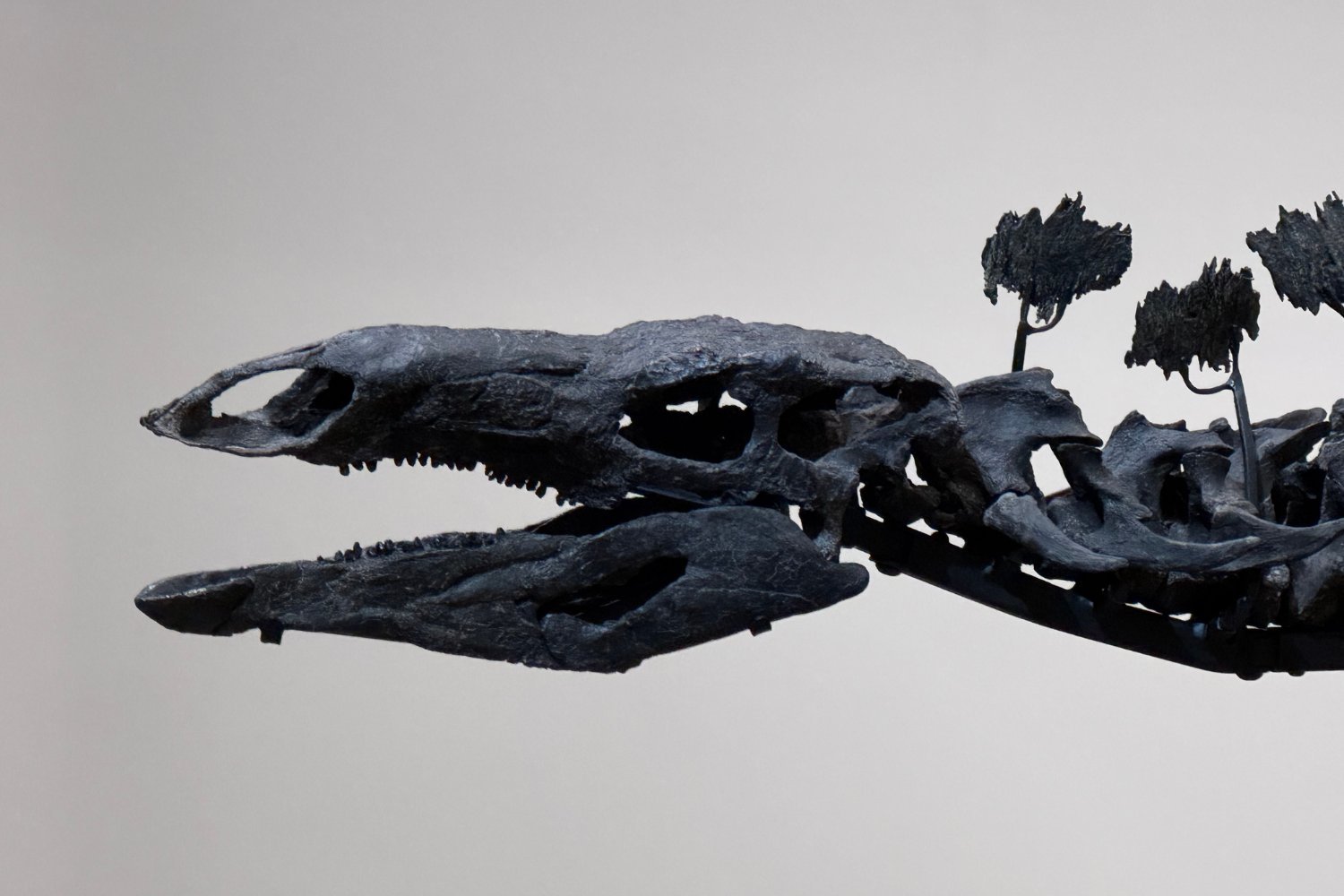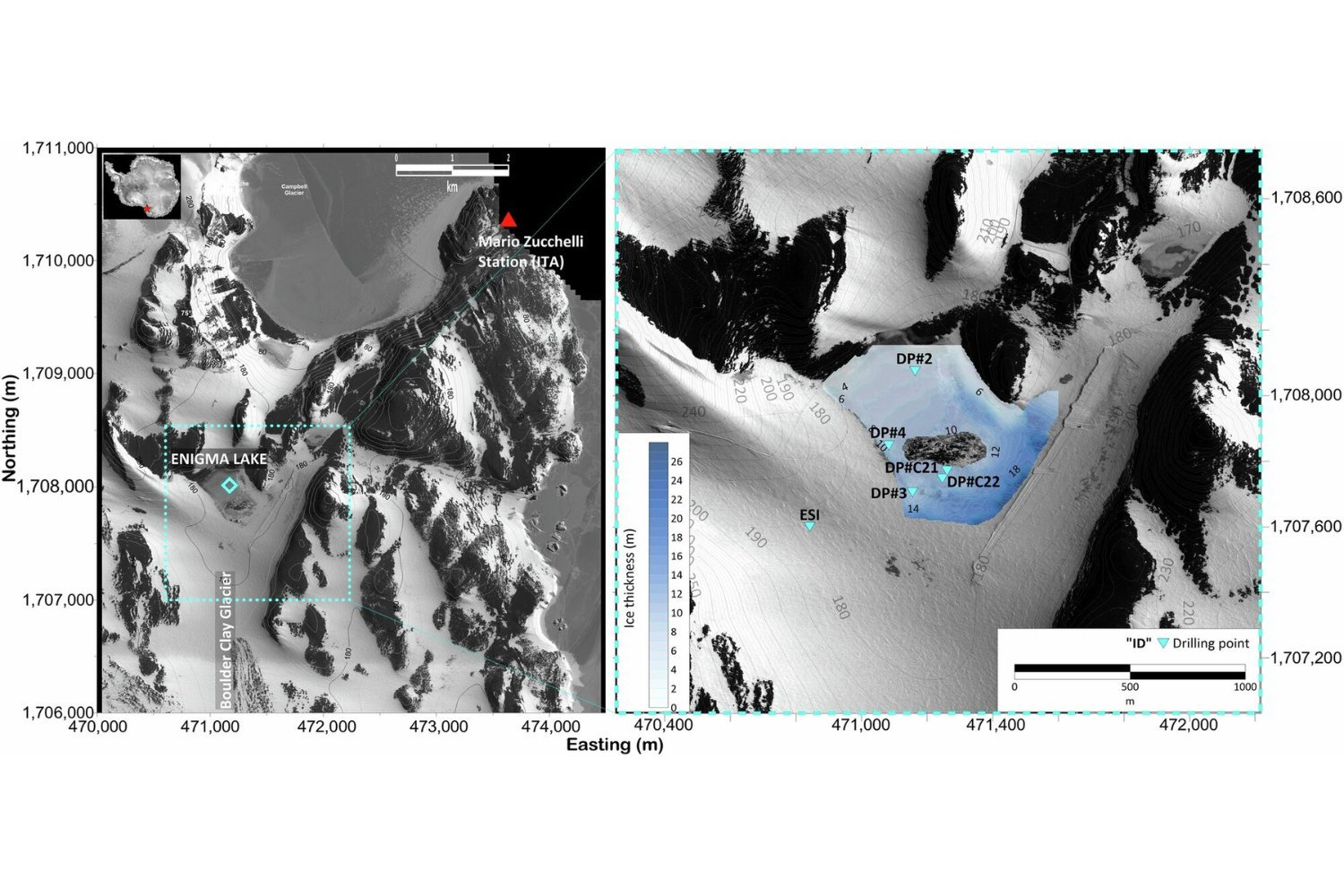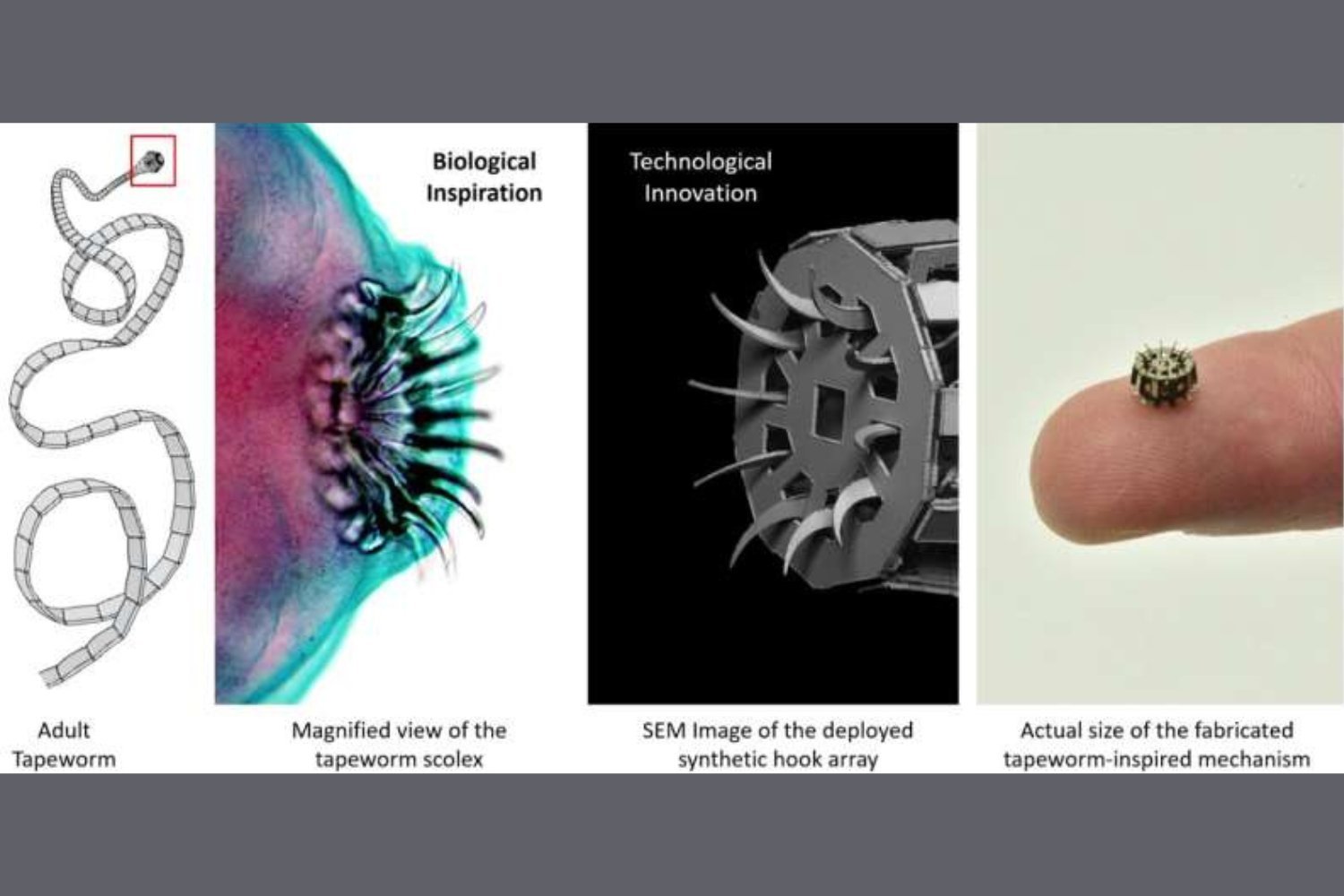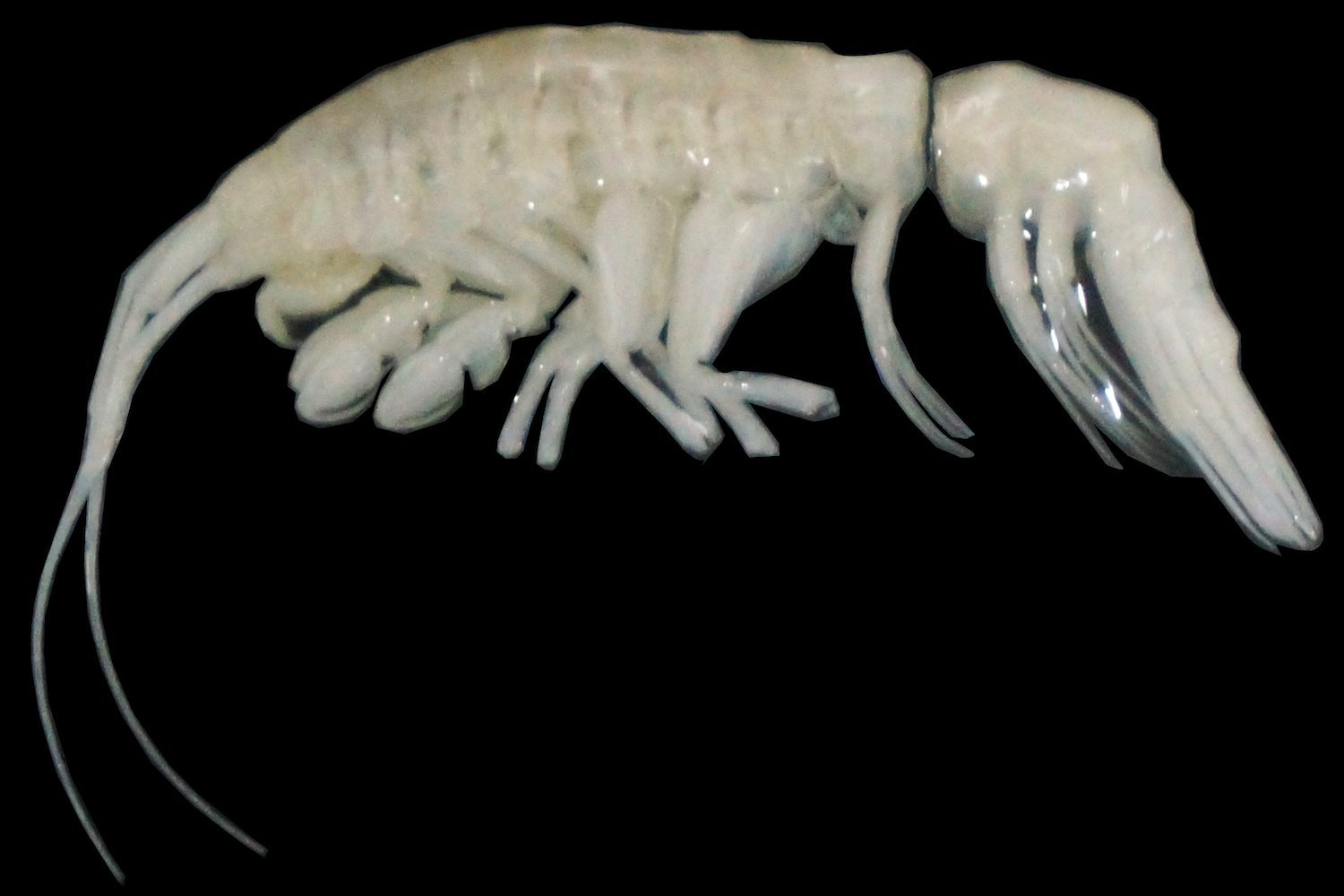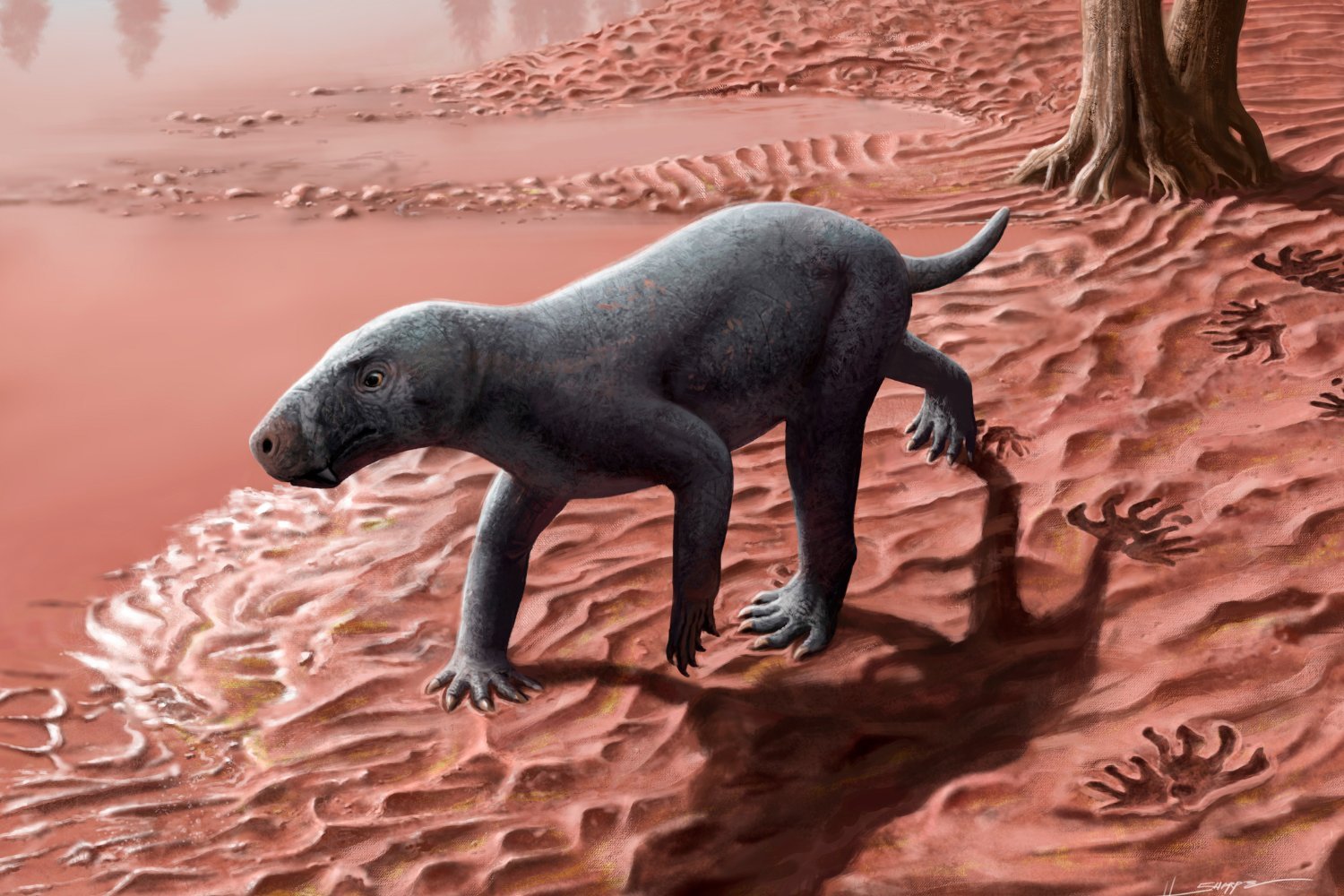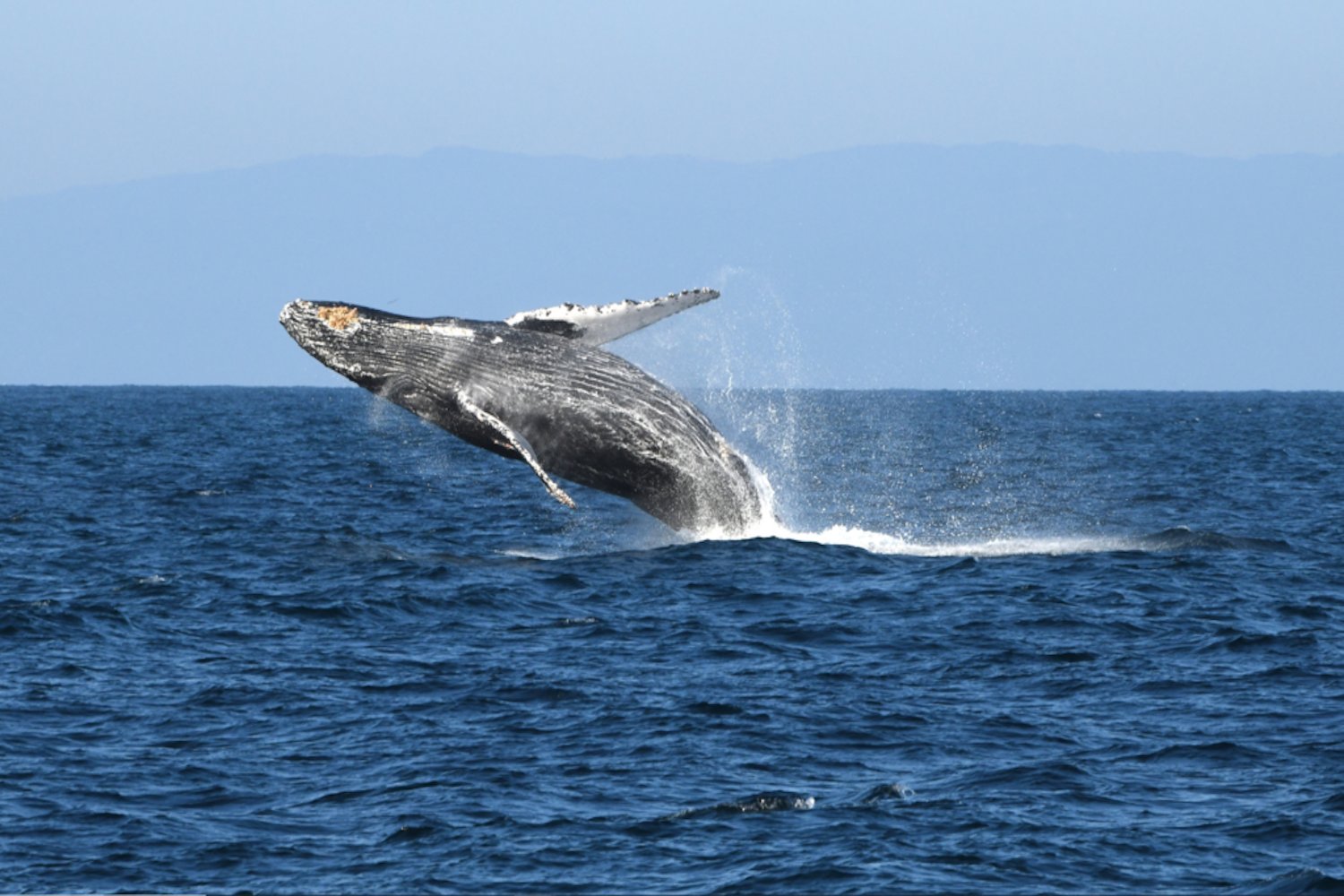The American Museum of Natural History (AMNH) has acquired a remarkable new resident: Apex, a 150-million-year-old stegosaurus fossil. Purchased for a record-breaking $44.6 million by hedge fund billionaire Ken Griffin, this Jurassic giant promises to unlock crucial insights into the life and growth of these iconic herbivores. Temporarily housed in the museum’s Gilder Center for Science, Education, and Innovation, Apex will be the subject of intensive research over the next four years.
This nearly complete stegosaurus skeleton, discovered near Dinosaur, Colorado in 2022, stands at an impressive 11 feet tall and stretches 27 feet long, making it one of the largest and most complete stegosaurus specimens ever unearthed. While its final resting place within the museum will be the fourth-floor dinosaur hall, Apex is currently on display on the first floor of the Gilder Center. Paleontologists are eager to determine its specific species, as three different stegosaurus species roamed western North America during the late Jurassic period.
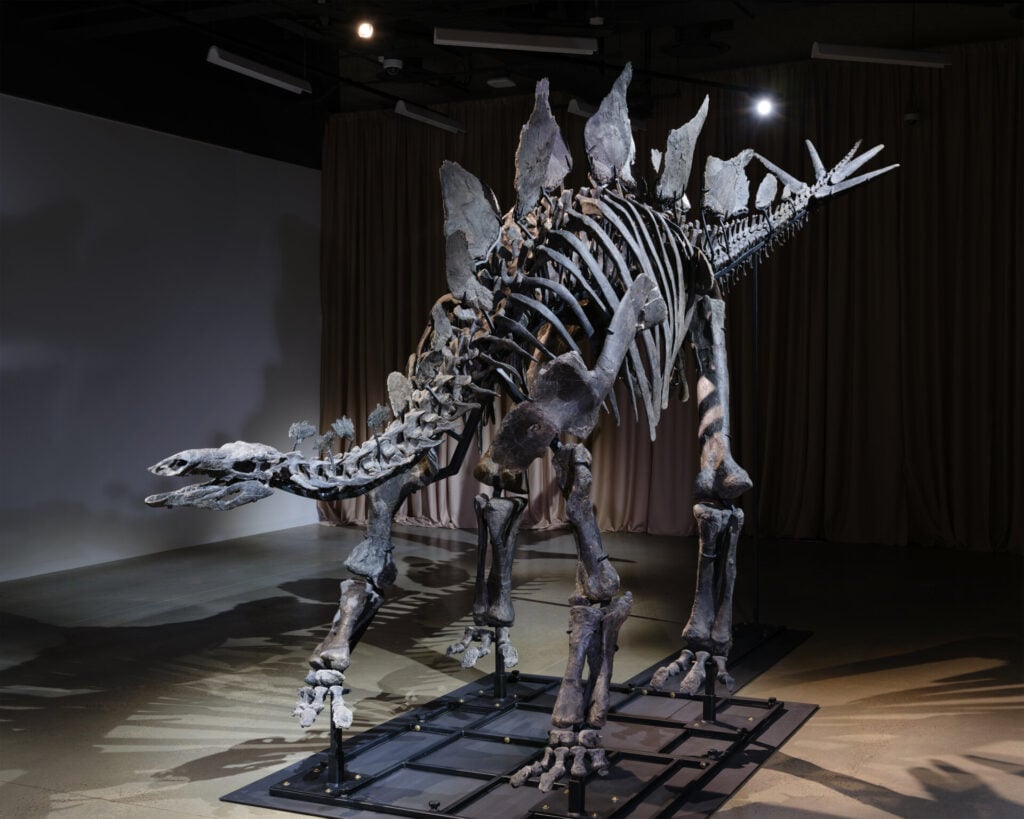 The Apex Stegosaurus on view in the American Museum of Natural History’s Richard Gilder Center for Science, Education, and Innovation
The Apex Stegosaurus on view in the American Museum of Natural History’s Richard Gilder Center for Science, Education, and Innovation
One of the primary research goals is to understand the skeletal changes that occurred during the stegosaurus’s growth. Roger Benson, a paleontologist and curator at the AMNH, explained that studying one of Apex’s large femurs will help create a growth curve for the species. This is particularly significant because recent studies suggest stegosaurs may have had slower metabolic rates compared to other dinosaurs, influencing their growth rate. Analysis of Apex’s bone could provide unprecedented insight into this aspect of stegosaurus biology. The team also plans to create a detailed 3D scan of the entire fossil.
A unique feature of Apex is a small puncture wound just below its shoulder blade, containing a fragment of bone identified as the tip of a chevron from its own thagomizer—the spiked tail. This suggests that, in death, the stegosaurus was curled up, and a tail spike pierced its shoulder. Beyond this self-inflicted injury, the fossil is remarkably well-preserved.
 The stegosaurus Apex at the American Museum of Natural History.
The stegosaurus Apex at the American Museum of Natural History.
Benson attributes the fossil’s exceptional condition to rapid burial and a lack of disturbance by scavengers, highlighting the element of luck in paleontological discoveries. The relatively undisturbed remains offer a pristine glimpse into the anatomy and life of a Jurassic giant.
Apex will be on public display at the AMNH starting December 8th. While its future home after the four-year research period remains uncertain, dependent on Ken Griffin’s decision, the fossil’s temporary residence at the museum offers a unique opportunity for scientists and the public alike to connect with this remarkable piece of prehistory.



